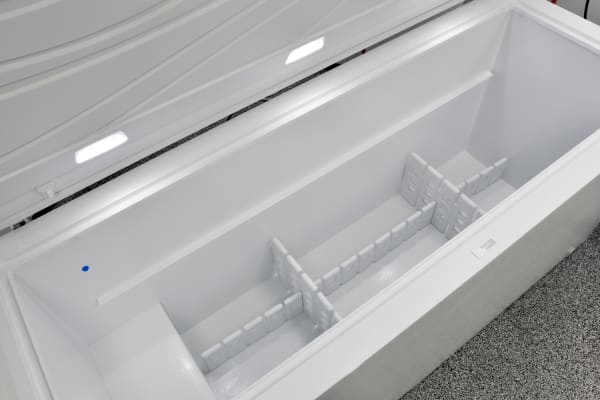
To calculate the capacity of your Kenmore freezer, you need to measure its dimensions and multiply them together. Alternatively, you can look up the model number of your freezer and find its capacity online or in the manual.
The most accurate way to calculate the capacity of your Kenmore freezer is to measure its dimensions and multiply them together. This will give you the gross capacity, which is the total volume of the freezer. However, the gross capacity may not reflect the actual usable space for storing food, as some space may be taken up by shelves, drawers, or other features. To get a more realistic estimate of the net capacity, you can subtract about 10% from the gross capacity. To measure the capacity of your Kenmore freezer, follow these steps:
For example, if your freezer measures 48 inches long, 24 inches wide, and 36 inches high, you can calculate its capacity as follows:
You have now successfully measured the capacity of your Kenmore freezer.

Another way to calculate the capacity of your Kenmore freezer is to look up its model number and find its specifications online or in the manual. The model number is usually located on a label inside or on the back of your freezer. The model number usually starts with three digits followed by a dot and then several more digits or letters. For example, 253.28432809 is a model number for a Kenmore upright freezer.
Once you have your model number, you can search for it on Google or on the Kenmore website (https://www.kenmore.com/products/refrigeration/freezers-and-ice-makers) and find its product page or manual. The product page or manual should list the gross and net capacities of your freezer in cubic feet. Alternatively, you can use some general estimates based on the type and size of your freezer. Here are some examples of how many cubic feet some common Kenmore freezers have:
These numbers are approximate and may vary depending on the model and features of your freezer.

Q: How do I choose the right size freezer for my needs?
A: The right size freezer for your needs depends on several factors, such as:
As a general rule, you should choose a freezer that can hold about one cubic foot per person in your household per month. For example, if you have four people in your household and you shop for groceries once a month, you should choose a freezer that has at least 16 cubic feet of net capacity. However, you may need more or less space depending on your eating habits, preferences, and lifestyle.
You should also consider the space and energy efficiency of your freezer. A larger freezer will take up more space and consume more energy than a smaller one, so you should choose a freezer that fits your available space and budget. You should also look for a freezer that has an ENERGY STAR rating, which means it meets the government standards for energy efficiency.
Q: How do I organize my Kenmore freezer to maximize its capacity?
A: Organizing your Kenmore freezer can help you maximize its capacity and make it easier to find and access your food. Here are some tips for organizing your freezer:
Q: How do I clean my Kenmore freezer to maintain its capacity?
A: Cleaning your Kenmore freezer can help you maintain its capacity and prevent odors, stains, and bacteria growth. You should clean your freezer at least once every six months, or more often if you notice any signs of dirt or mold. To clean your freezer, follow these steps:
The capacity of your Kenmore freezer is the amount of space available for storing food in cubic feet. You can calculate the capacity of your Kenmore freezer by measuring its dimensions and multiplying them together, or by looking up its model number and finding its specifications online or in the manual. Knowing the capacity of your Kenmore freezer can help you plan your shopping, organize your food, and save energy.
